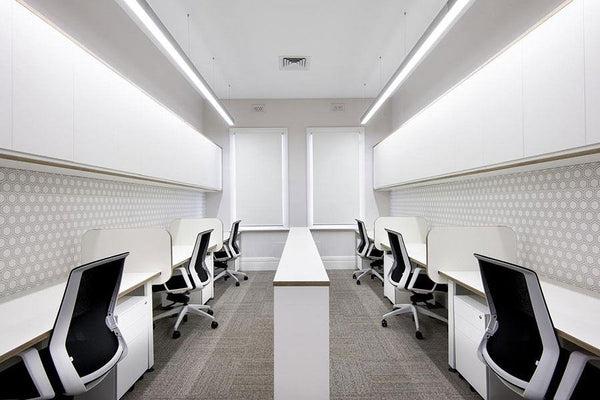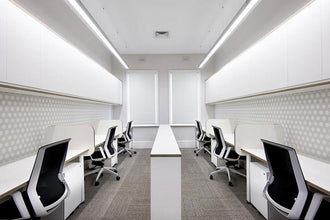
The Modern Office Bar Leaner: A Guide to Flexible Workspaces
Introduction to the Bar Leaner
In the evolving landscape of office design, where flexibility, collaboration, and ergonomics are paramount, the bar leaner has emerged as a popular and innovative furniture choice. These tall, slender tables, akin to those found in bars and cafes, are now being integrated into office environments, offering a range of benefits that align with modern workplace needs. This article explores the various facets of bar leaners, their advantages, and how they can be effectively incorporated into office spaces to enhance productivity and collaboration.
Key Takeaways
- Versatile Furniture: A bar leaner offers a flexible solution for various office spaces, from breakout areas and kitchens to informal meeting zones.
- Improved Wellbeing: Using a high table encourages movement and reduces sedentary behaviour, contributing to better employee health and focus.
- Enhanced Collaboration: The open, accessible design of a bar table fosters spontaneous interaction and more dynamic communication among teams.
- Space-Efficient Design: Bar leaners are an excellent option for smaller offices or multi-purpose areas, maximising floor space without sacrificing functionality.
What Is a Bar Leaner?
A bar leaner, also known as a high table or standing table, is an elevated table typically used without traditional chairs. Instead, they are often accompanied by high stools or designed for standing use. These tables come in various shapes, sizes, and materials, making them versatile additions to any office setting. Their primary function is to provide a casual yet functional space for employees to gather, collaborate, and work in a more dynamic and interactive manner.
The Benefits of a Bar Leaner in Office Spaces
Introducing a bar leaner or bar table into your office provides a multitude of benefits for both employees and the business.
Encouraging Movement and Reducing Sedentary Behaviour
Traditional office setups often involve prolonged sitting, which has been linked to various health issues such as back pain, obesity, and cardiovascular diseases. Bar leaners promote standing, encouraging employees to move around more frequently. This can help reduce the risks associated with sedentary behaviour and contribute to overall well-being.
Fostering Collaboration and Interaction
A bar table creates a more informal and open atmosphere, making it easier for employees to engage in spontaneous conversations and impromptu meetings. The lack of barriers, such as high-backed chairs, facilitates better eye contact and communication, fostering a collaborative environment.
Flexibility and Versatility
These high tables are incredibly versatile and can be used in various settings within the office, including break rooms, kitchens, open-plan areas, and even conference rooms. They can be easily moved and reconfigured to suit different purposes, from quick team huddles to solo working sessions.
Space Efficiency
Bar leaners take up less floor space compared to traditional seating arrangements. This makes them an ideal solution for offices with limited space, allowing for more efficient use of the available area without compromising on functionality.
Aesthetic Appeal
Available in a wide range of designs, materials, and finishes, a bar leaner can enhance the aesthetic appeal of the office. They can be tailored to match the office decor, contributing to a modern and stylish workspace that reflects the company’s brand and culture.
Integrating Bar Leaners into Office Spaces
Effectively integrating a bar leaner requires strategic placement within different zones of the office.
Open Plan Offices
In open-plan offices, bar leaners can be strategically placed to create distinct zones for different activities. For instance, they can be positioned near workstations for quick team discussions or in designated collaboration areas to encourage group work.
Breakout Areas
Bar leaners are ideal for breakout areas where employees can relax, socialize, and recharge. These areas can be equipped with comfortable stools and additional amenities such as coffee machines and snack bars to create a welcoming and informal space.
Meeting Rooms
Incorporating a high table in meeting rooms can transform the traditional meeting format. Standing meetings tend to be shorter and more focused, enhancing productivity and decision-making. High tables can also serve as additional workspace during brainstorming sessions.
Reception Areas
Placing bar leaners in reception areas can create a more engaging and welcoming environment for visitors. They provide a convenient spot for guests to sit or stand while waiting, adding to the overall experience.
Outdoor Spaces
If the office has access to outdoor spaces such as terraces or patios, bar leaners can be an excellent addition. They allow employees to enjoy fresh air and natural light while working or taking breaks, promoting a healthier and more enjoyable work environment.
Case Studies: Successful Implementation of Bar Leaners
Successful implementation in various companies highlights the positive impact of these high tables.
Tech Start-Up in Silicon Valley
Uber in Silicon Valley integrated bar leaners into their open-plan office to promote a culture of innovation and collaboration. By placing bar leaners near workstations and in common areas, they observed an increase in spontaneous brainstorming sessions and a more dynamic workflow. Employees reported feeling more energized and engaged throughout the day.

Investment Firm in New York
Cohen Steers in New York transformed their traditional office rooms by replacing standard tables with bar leaners. This change encouraged more active and efficient meetings, reducing the average meeting time by 20%. The agency also noticed improved creativity and idea generation during collaborative sessions.

Financial Firm in London
WeWork in London used bar leaners to revamp their break rooms and informal meeting spaces. The new setup provided employees with a comfortable and stylish area to unwind and interact. This resulted in increased employee satisfaction and a stronger sense of community within the office.

Best Practices for Choosing and Using a Bar Leaner
To maximise the benefits of your bar leaner, consider these best practices for selection and implementation.
Consider Ergonomics
Ensure that bar leaners are at an appropriate height for standing use, typically around 1000mm to 1100mm. If using stools, they should have footrests and back support to provide comfort during longer periods of use.
Balance Aesthetics and Functionality
Choose a bar leaner that complements the office decor while meeting functional requirements. Durable materials and finishes that are easy to clean and maintain are ideal for high-traffic areas.
Promote Inclusivity
Provide a mix of seating options, including standard-height tables and chairs, to accommodate employees with different needs and preferences. This ensures that everyone can benefit from the collaborative and dynamic environment created by bar leaners.
Incorporate Technology
To enhance the functionality of a bar table, consider integrating technology such as built-in power outlets, USB ports, and wireless charging stations. This makes it easy for employees to stay connected and productive while using these spaces.
Regularly Assess and Adapt
Continuously assess how bar leaners are being used and gather feedback from employees. This will help identify any adjustments needed to optimize their use and ensure they continue to meet the evolving needs of the office.
FAQs
What is a bar leaner?
A bar leaner, also known as a bar table or high table, is a tall table designed for standing or use with high stools. It provides a versatile surface for work, meetings, and socialising in modern office environments.
Are bar leaners ergonomic?
They can be highly ergonomic when chosen correctly. An ideal bar leaner promotes standing, which reduces sedentary behaviour. When paired with ergonomic high stools that have footrests, they provide a comfortable alternative to traditional desks.
How does a high table improve collaboration?
The height and open design of a high table encourage more natural, face-to-face interactions. They create informal meeting points for spontaneous discussions, making collaboration seamless and dynamic.
What is the best height for a bar table?
The standard height for a commercial bar table is typically between 1000mm and 1100mm. This height is comfortable for most adults to stand at and works well with standard bar stools.
Conclusion
Bar leaners are more than just trendy office furniture; they are strategic tools that can transform the workplace into a more dynamic, collaborative, and productive environment. By encouraging movement, fostering interaction, and offering versatile and space-efficient solutions, these high tables address many of the challenges faced by modern offices. Whether in open-plan areas, breakout zones, meeting rooms, or reception spaces, a bar table can significantly enhance the overall office experience, contributing to the well-being and success of employees and the organization as a whole. As businesses continue to evolve and adapt to new ways of working, integrating bar leaners into office design can be a smart and forward-thinking choice. By doing so, companies can create a workspace that not only meets the practical needs of their employees but also inspires creativity, collaboration, and a sense of community.
Office Furniture Company helps organisations create more flexible, collaborative, and productive workspaces with our curated range of commercial-grade bar leaners and high tables; explore the ideal solution for your office by calling our team on 1300 99 77 47 or contacting us online.

About the Author
Priya Bennett is the Subject Matter Expert guiding Office Furniture Company's strategic approach to commercial fitouts. Her insights are drawn from her deep experience across diverse sectors, including government, education, and healthcare.
Recognised as the company's trusted internal voice on products, workplace design and ergonomics, Priya also serves as lead content author. She translates complex industry knowledge into practical articles and guides, establishing a key resource that empowers businesses to create more productive and healthy work environments.


















